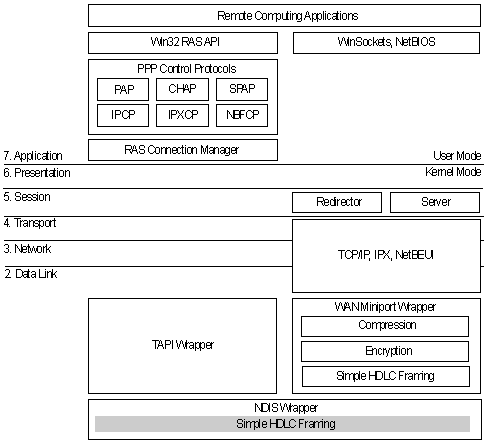
Understanding the RAS connection sequence will help you understand the PPP protocol.
Upon connecting to a remote computer, PPP negotiation begins.
First, framing rules are established between the remote computer and server. This allows continued communication (frame transfer) to occur.
Next the RAS server authenticates the remote user using the PPP authentication protocols (PAP, CHAP, SPAP). The protocols invoked depend on the security configurations of the remote client and server.
Once authenticated, the Network Control Protocols (NCPs) are used to enable and configure the server for the LAN protocol that will be used on the remote client.
When the PPP connection sequence has completed successfully, the remote client and RAS server can begin to transfer data using any supported protocol, such as Windows Sockets, RPC, or NetBIOS. The following illustrates where the PPP protocol are on the OSI model.

Figure 1.14 Location of the PPP Protocol on the OSI Model
If your remote client is configured to use the NetBIOS gateway or SLIP, this sequence is invalid.